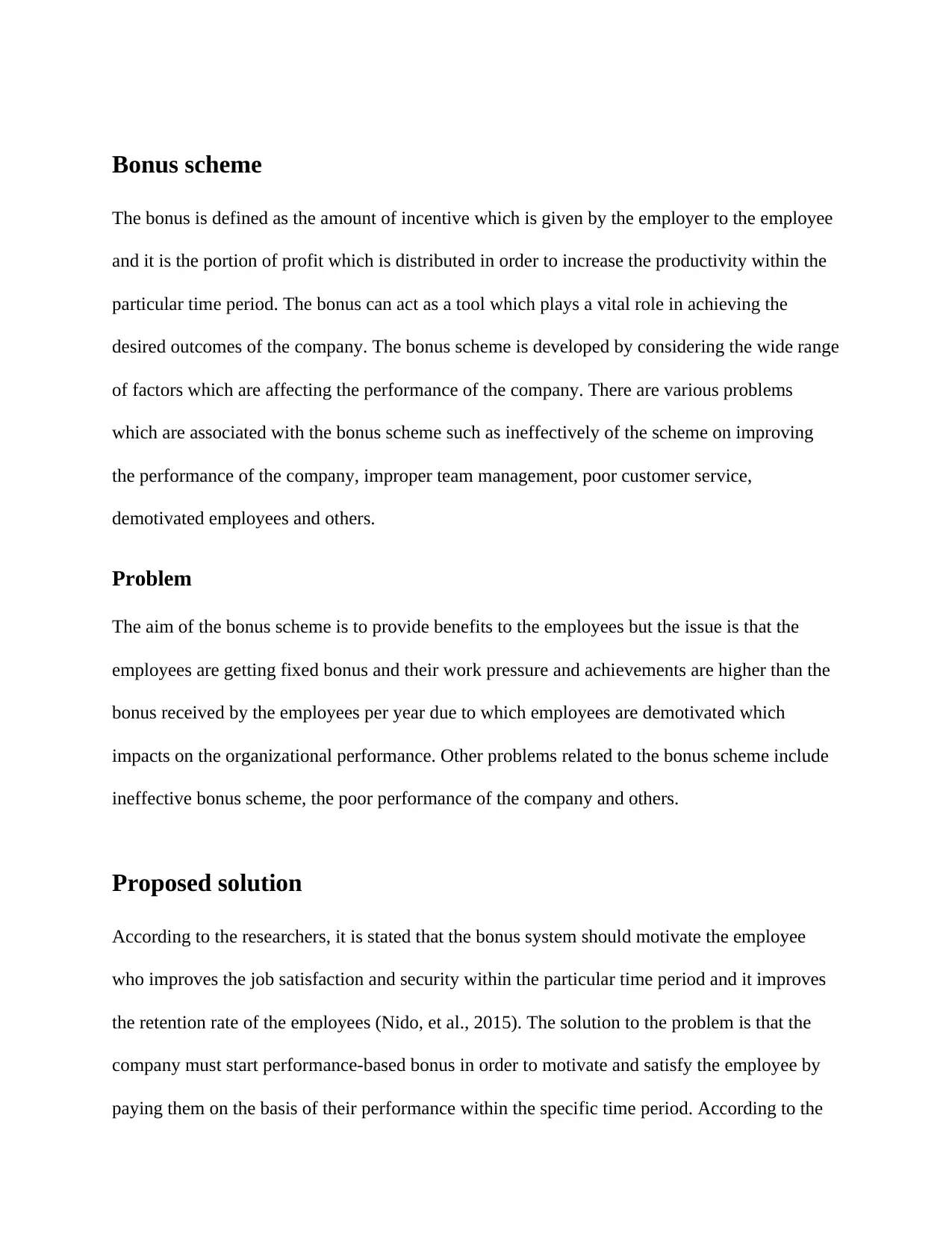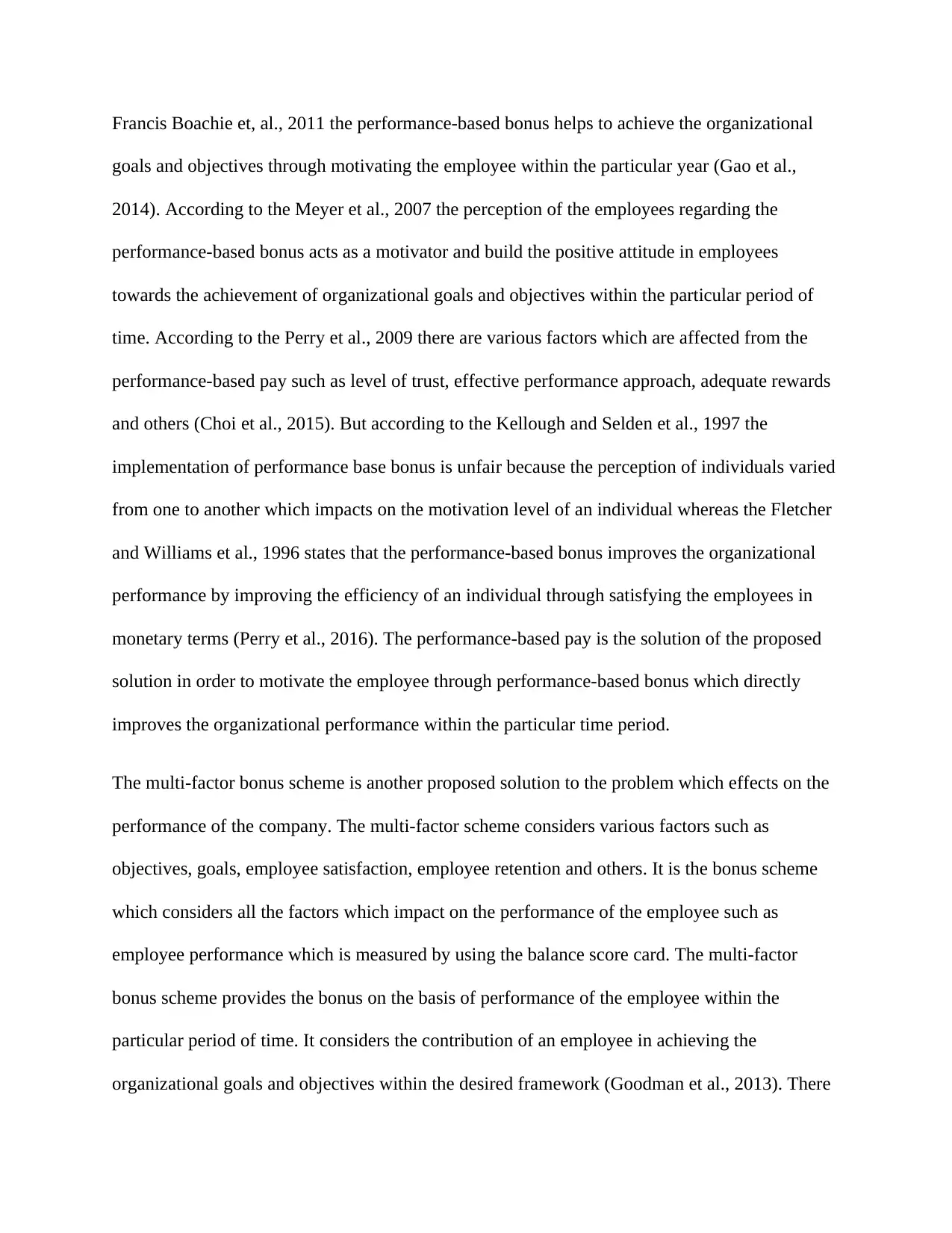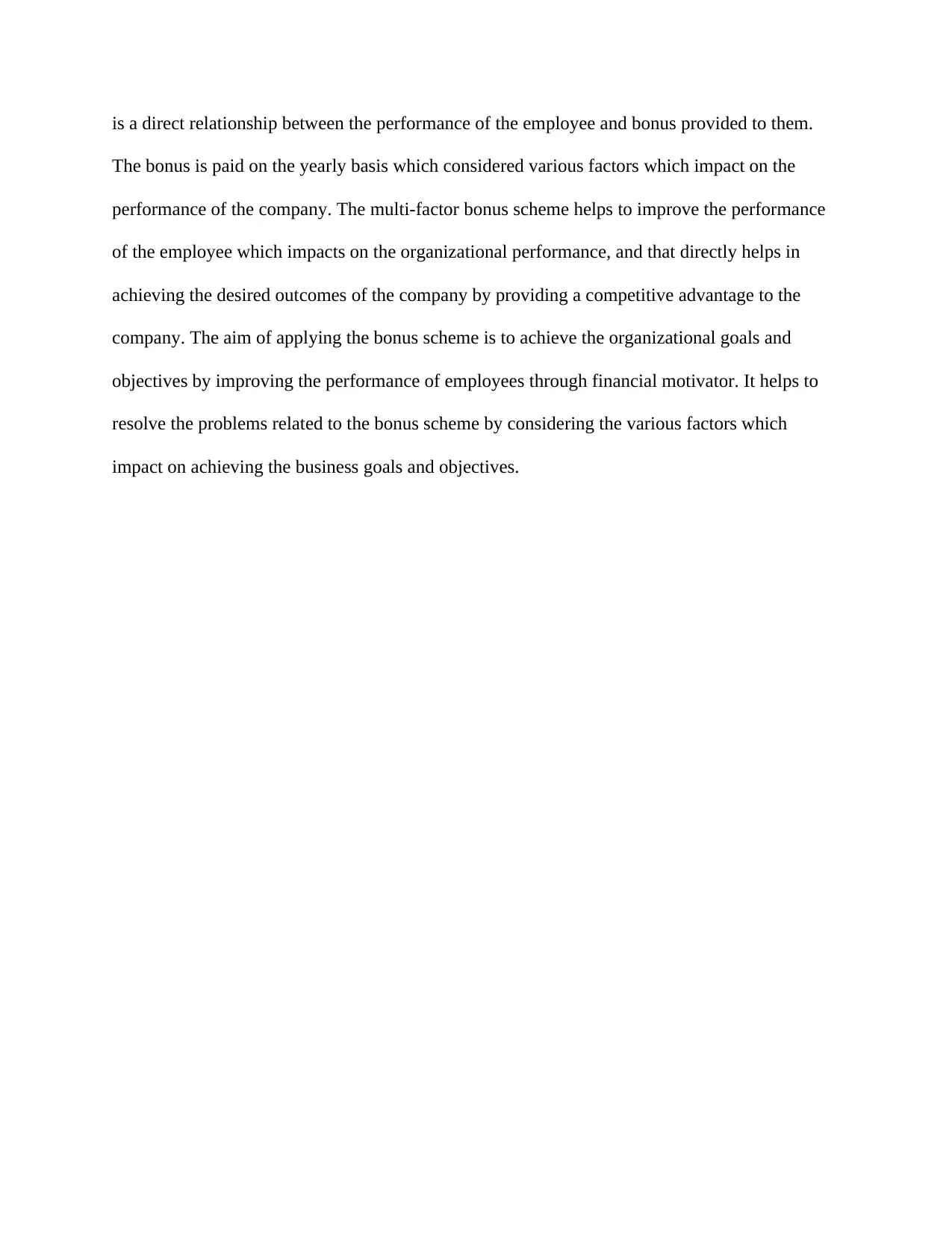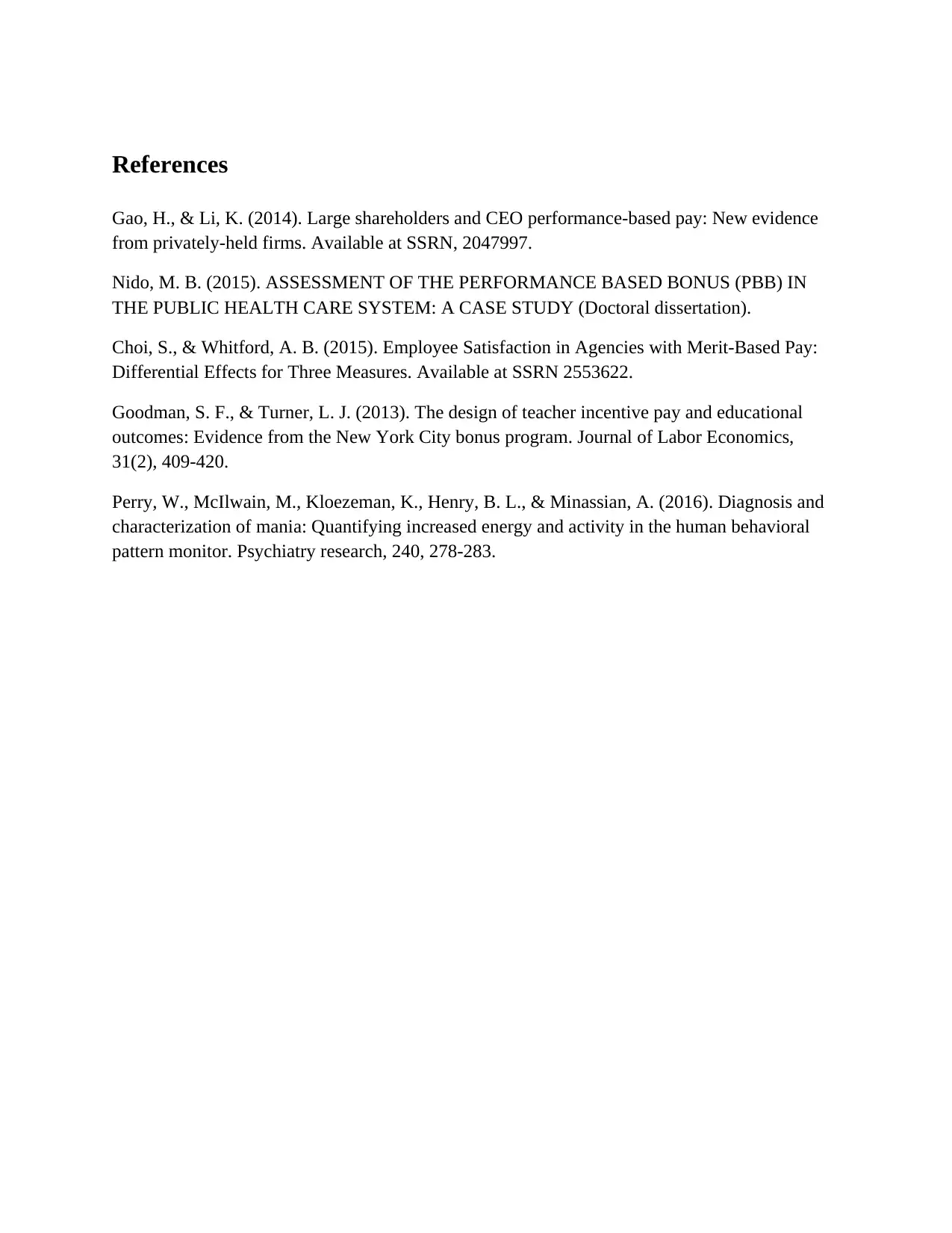CERA's Bonus Scheme Analysis: Performance-Based Incentive Report
VerifiedAdded on 2019/09/20
|5
|961
|428
Report
AI Summary
This report analyzes CERA's bonus scheme, focusing on the issues arising from a fixed bonus structure that fails to adequately reward employee effort and achievement, leading to demotivation and impacting organizational performance. The report identifies problems associated with the bonus scheme, such as its ineffectiveness in improving company performance and poor employee satisfaction. It proposes performance-based bonus schemes as a solution, emphasizing the positive impact on employee motivation, job satisfaction, and retention rates, supported by research from various scholars. Furthermore, the report suggests a multi-factor bonus scheme, which considers multiple factors like objectives, goals, and employee satisfaction, measured using a balanced scorecard, to provide a comprehensive approach to incentivizing employees and achieving organizational goals. The core argument is that by aligning bonuses with performance, CERA can enhance employee motivation, improve company performance, and achieve desired business outcomes, thereby providing a competitive advantage. The report cites several academic sources to support its claims.
1 out of 5












![[object Object]](/_next/static/media/star-bottom.7253800d.svg)